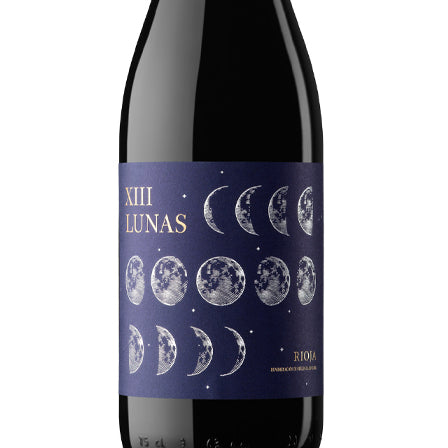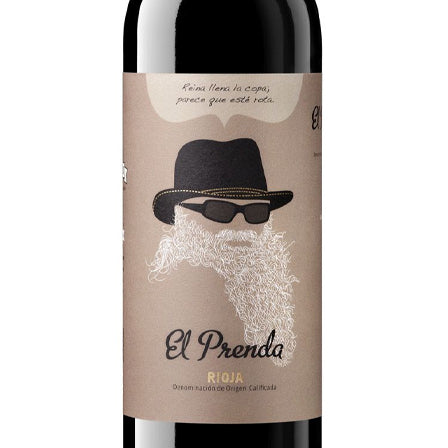marries this moment
 Playlist: Let's improve this year
Playlist: Let's improve this year
Serrano ham with quince.
A classic and different starter at the same time, ideal for these dates!
Ingredients
- Serrano ham
- quince tacos
- Bread
Elaboration
First take aslice of bread, cut off the rinds and then split lengthwise three or four rows. Calculate the width of the slice and cut a small cube of quince that is enough to wrap it on the slice. Put the piece of quince on the slice and wrap it with the bread, take the slice of ham and wrap the bread. Easy and delicious, don't you think?
Oven roasted shoulder of lamb.
Who can resist?
Ingredients
- Paletilla de cordero lechal4
- ripe tomato2
- onion2
- pitted dates12
- apple1
- dried thyme
- White wine (glass)1
- extra virgin olive oil
- Shall
- ground black pepper
Elaboration:
We start by preheating the oven to 120ºC. Then, we season the shoulders, put them on a baking tray and impregnate them with oil. Put the shoulders in the oven and let them gently brown in the middle part of the oven, for about 60 minutes. We turn them over from time to time.
When they are golden brown, cut the tomatoes, onion and apple into wedges, place them on the tray with the shoulders along with the thyme, the wine, a pinch of salt and pepper, a splash of oil and the dates. All well mixed and distributed on the tray.
We raise the temperature of the oven to 150º C and let it cook for approximately 45 minutes, the last 15 or 20 minutes, we can turn on the gratin to toast the surface a little more if we see that it has not been as toasted as we like.
We will serve theBaked lamb shoulders fresh from the oven and accompanied by the vegetables and fruits that we have baked with them. If we want, we can add in the second part of cooking a few potatoes cut into wedges.
Strawberry and yogurt ice cream mini-bonbons.
A good ending.
Ingredients
- 12 strawberries
- 2 sweetened yogurts
Elaboration:
We start by pouring the yogurts into a bowl and whisking them until they are really creamy. In an ice bucket, preferably in the shape of a hemisphere or a heart so that the result is more beautiful, fill the cubes with the yogurt up to about three quarters of their capacity. Put in the freezer for half an hour so that the cream begins to harden. Meanwhile, we clean the strawberries well, and cut them in half, so that they show their peculiar drawing that will contrast with the yogurt coverage. We take the ice tray out of the freezer and carefully place the half strawberries on top of each portion of yogurt, pressing on the strawberry until it is flush, but without covering it with the yogurt. Once we have everything in place, we cover the ice tray with plastic or kitchen film so that the strawberries do not burn in the freezer due to the action of the cold and we leave them for about twelve hours. We already have them ready for when we want to enjoy them.The.
The Wine: Pirate Grape
Petit Verdot red wine
Legend has it that a fierce oenologist known as Fernando Freire embarked on a risky adventure, to seize the most precious of the French native varieties to make the most rogue wine on both sides of the ocean. This is how Uva Pirata was born, a wine with character and personality, with daring tannins that will conquer palates wherever it goes. Do you dare resist their approaches?
For this elaboration, Petit Verdot grapes from 2 different subzones of the DOP Valencia have been used. With different altitudes and climates to achieve an excellent final result with the union of the best characteristics of each region. On the one hand, a vineyard at an altitude of 830 m and a continental climate, with a great thermal oscillation between day and night, which means that its fruits add body and character to this wine. On the other hand, the vineyard at an altitude of 420 m and a clear Mediterranean climate with mild winters and high temperatures in summer, which guarantee an unbeatable maturation of the grapes, providing fruit load and elegance, at the same time as the optimal graduation for its fermentation in cask. The harvest has been carried out by hand with a selection of grains of excellent health status. Both destemming and crushing are carried out very gently before cold maceration to obtain as many varietal aromas as possible. At the optimum moment, it is taken to new French oak barrels where fermentation takes place. This greatly improves the organoleptic characteristics of this wine, giving greater structure and unctuousness in the mouth. Using the "Battonage" technique to keep all the wine in contact with the finest lees has been improved.
Tasting test answers
1| APPEARANCE:
Viscosity:MediaClarity:Sparkly Tinto:Ruby
2| AROMAS AND FLAVORS
Intensity:High Aromas:Red fruits, blackberries, caramel, vanilla and mocha.
3| STRUCTURE
Sweetness:semisweetAcidity:MediaTannins:MediumBody:round


The Winery
Bodegas Vicente Gandia is a Valencian wine-producing and marketing company founded in 1885. At that time, the marketing of Vicente Gandia wines, as well as 100% of those produced in the Valencian Community, were destined for export in large barrels, specifically to European countries who, thanks to the Valencian Community, manage to provide greater vigor and grade to their wines. It is located on a family estate called Hoya de Cadenas, in the town of Utiel.
The fourth generation is responsible for the increase in the quality of the wines, for the creation of new lines of wine aimed at a younger audience, as well as for the cultural project Arte en Barrica, made up of a collection of barrels customized by artists such as Carmen Calvo, Miquel Navarro or Javier Mariscal.
In 2018, it was awarded the "Aurum Europa Excellence Enogastronomic Award", a recognition that recognizes it as the "Best European Winery", acknowledging its career and work within the world of oenology. This award was granted by CEUCO (European Council of Enogastronomical Brotherhoods), a European organization that brings together the main brotherhoods dedicated to the protection and dissemination of gastronomy and oenology in their places of origin.
The Winery
Bodegas Vicente Gandia is a Valencian wine-producing and marketing company founded in 1885. At that time, the marketing of Vicente Gandia wines, as well as 100% of those produced in the Valencian Community, were destined for export in large barrels, specifically to European countries who, thanks to the Valencian Community, manage to provide greater vigor and grade to their wines. It is located on a family estate called Hoya de Cadenas, in the town of Utiel.
The fourth generation is responsible for the increase in the quality of the wines, for the creation of new lines of wine aimed at a younger audience, as well as for the cultural project Arte en Barrica, made up of a collection of barrels customized by artists such as Carmen Calvo, Miquel Navarro or Javier Mariscal.
In 2018, it was awarded the "Aurum Europa Excellence Enogastronomic Award", a recognition that recognizes it as the "Best European Winery", acknowledging its career and work within the world of oenology. This award was granted by CEUCO (European Council of Enogastronomical Brotherhoods), a European organization that brings together the main brotherhoods dedicated to the protection and dissemination of gastronomy and oenology in their places of origin.

The Wine: XIII Moons
Wine with a fresh aroma, of wild red fruits and balsamic and wood notes that are very well integrated. On the palate XIII Lunas is fresh, meaty and dense. Round and highly polished tannins.
In a year, the moon makes 13 revolutions around the earth. That is, complete 13 lunations. Current and easy to drink wine, modern style
Tasting test answers
1| APPEARANCE:
Viscosity:MediaClarity:Sparkly Tinto:Ruby
2| AROMAS AND FLAVORS
Intensity:High Aromas:Fruity, floral, wild fruit and balsamic notes.
3| STRUCTURE
Sweetness:semisweetAcidity:Middle-lowTannins:Medium-LowBody:round


The Winery
The Najerilla Valley, in the Rioja Alta wine area, is a landscape dominated by vineyards. Here are the Bodegas Fin de Siglo, integrated into the Peralada Group since the beginning of 2014.
In Arenzana de Abajo, the care of the winegrowers in the area has managed to keep strains over 100 years old in production, vines fully adapted to the conditions of the land and the climate of the area.
Bodegas Fin de Siglo, was established in 1999 at the initiative of a small group of families of winegrowers from this municipality, winemakers of several generations. The fundamental objective is to enhance the existing wealth in the old vines of this region, to get the best out of vines that produce high-quality bunches, with small and separate grapes, highly concentrated, which give more structure, body and aroma to the wine made with they.
The Winery
The Najerilla Valley, in the Rioja Alta wine area, is a landscape dominated by vineyards. Here are the Bodegas Fin de Siglo, integrated into the Peralada Group since the beginning of 2014.
In Arenzana de Abajo, the care of the winegrowers in the area has managed to keep strains over 100 years old in production, vines fully adapted to the conditions of the land and the climate of the area.
Bodegas Fin de Siglo, was established in 1999 at the initiative of a small group of families of winegrowers from this municipality, winemakers of several generations. The fundamental objective is to enhance the existing wealth in the old vines of this region, to get the best out of vines that produce high-quality bunches, with small and separate grapes, highly concentrated, which give more structure, body and aroma to the wine made with they.





